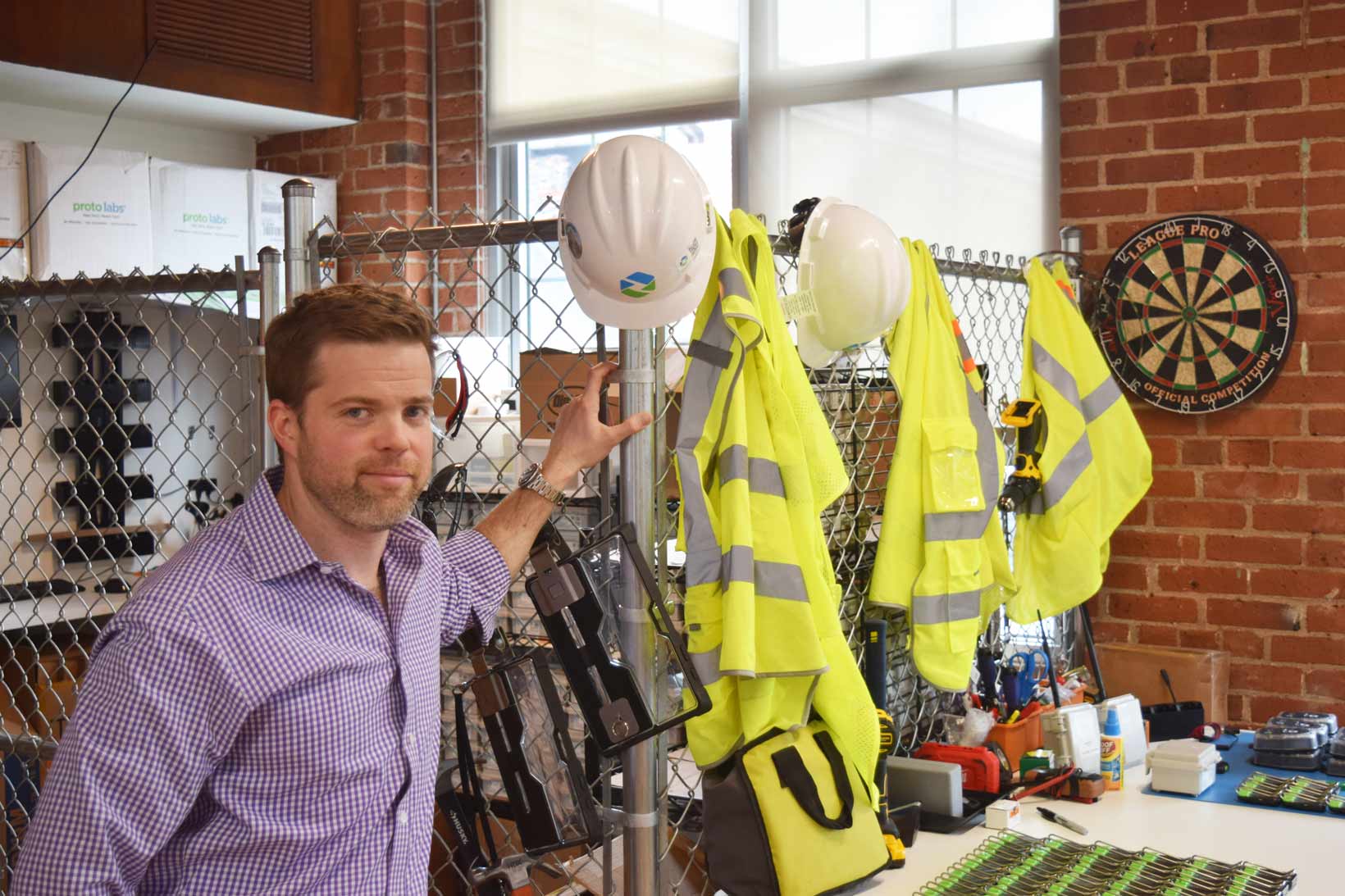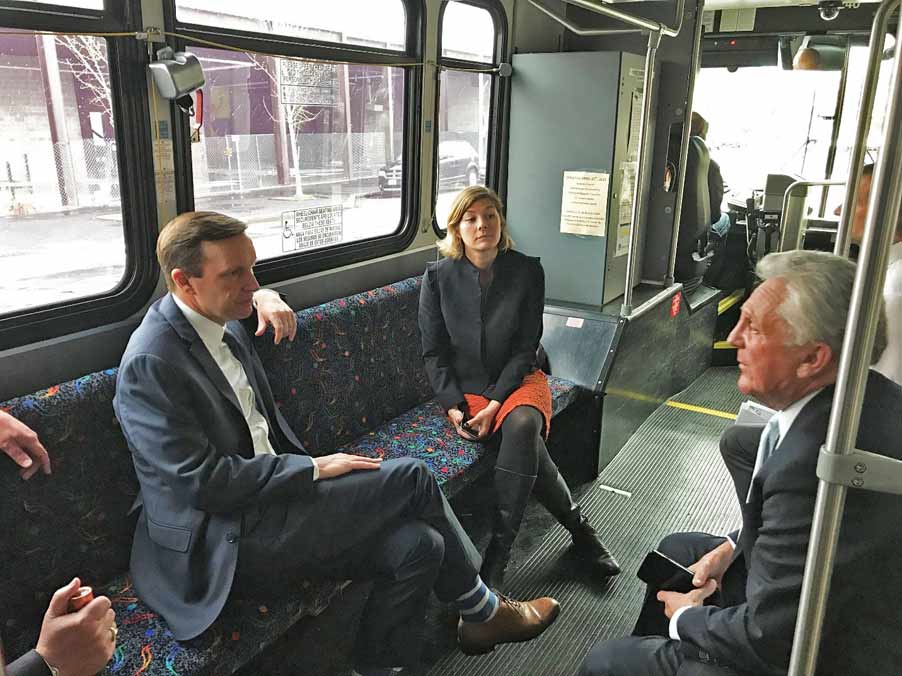
One word that you never want to hear on a construction site is “Oops” ”” and that”™s where Peter Schermerhorn comes in. As the president and CEO of Norwalk-based Triax Technologies Inc., Schermerhorn offers the construction industry the Spot-r system to optimize worksite safety and mitigate risk management concerns.
Triax”™s Spot-r is based on a proprietary mesh network with compact sensors and a cloud-based dashboard. The system consists of three hardware pieces ”” the Spot-r Clip worn by on-site workers, the Spot-r EquipTag to monitor real-time equipment location, operator identity and utilization, and the Spot-r EvacTag for augmenting evacuation procedures ”” while the system”™s dashboard allows both on-site supervisors and off-site management to analyze construction operations in real time. The system”™s network is a scalable communication protocol that does not require WiFi or GPS coverage to operate.
“When Triax was founded in 2012, the original focus for the technology was not in construction, but in monitoring injuries in contact sports.
“The devices were placed where athletes got hit and measured the force of impact, while working to resolve the concussion crisis not just in football, but in non-helmeted sports as well,” he said. “Our focus was how to communicate data off of those sensors to the sideline in real time. That led to the development of communications protocols and a mesh network-type technology.”
Triax realized that this technology could be adapted into other environments, and its research found the construction industry was among the least digitized in the nation despite the risk and safety issues involved in its daily operations.
“We saw more comprehensive use of the technology in the construction vertical than in the athletics field,” he added. “In 2016, we made our move to focus exclusively on construction.”
Schermerhorn pointed out that the construction environment is among the most hostile for technology systems.
“The physical plant is constantly changing,” he explained. “You have a lot of concrete and steel that are constantly moving, which impedes radio frequency signals. You don”™t have a lot of power availability. You have workforces that, by the very nature of being subcontracted out, are coming and going with a lot of regularity. It is hard to imagine a less hospitable environment for systems like enterprise-wide WiFi or other technology advances that have driven a lot of gains in industries like manufacturing and warehousing.”
Triax”™s reliance on proprietary technology was a key selling point for Schermerhorn, who pointed out that off the shelf or other protocols that worked well in other environments did not carry over to construction sites. He also acknowledged that construction workers would benefit from a system that was not overly complicated.
“Our key design protocol was that it had to be very user friendly,” he continued. “Most of the devices are run many months off D-cell batteries. And the software is quite easy to use. We think of ourselves as a technology and service company, so our managers go to the site and are on call for the customers to make sure they are engaging effectively with the system.”
Schermerhorn admitted that the initial reaction to Spot-r was mixed.
“You have all degrees of sophistication,” he said. “The real cutting-edge market leaders and early adopters reacted with, ”˜What took you guys so long? We”™ve been looking for this for the last 10 years.”™ For others in the market, it was more of an education process.”
In addition to its Norwalk headquarters, Triax runs an engineering and programming office in East Hartford. Schermerhorn believed his company was “in a unique position to make Connecticut a favorable place for us to do business, because of insurance business in Hartford and United Rentals in Stamford. We cross paths a lot with Stanley Black & Decker as well. There are a lot of players in the construction risk space in Connecticut, too.”
After three years in the construction space, Triax is working with more than one-third of the ENR Top 25 general contractors across the country, with projects ranging from commercial and industrial developments to solar array installations. “We like large-scale projects because our networks can handle very large projects,” Schermerhorn said. “We also do a lot of smaller projects like commercial renovations.”
Schermerhorn envisioned opening additional regional offices for Triax across the country and exporting the technology to foreign markets. He also noted that the company is now “actively looking at other industries and keeping in mind the broad flexibility and applicability of the network.”


















